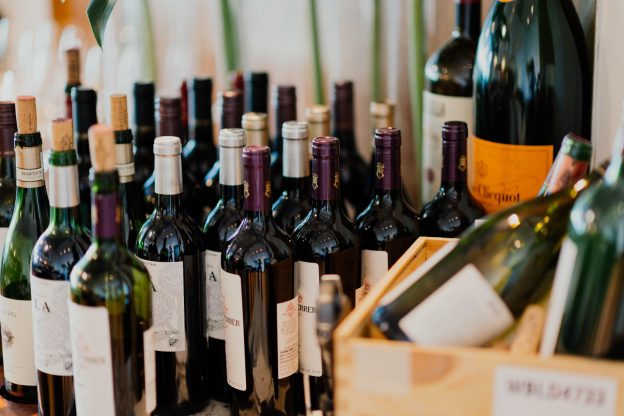
On a King’s Bench roll from Michaelmas 1434, there is an entry telling of accusations made against James Gentill or Gentyll, a broker of London [though perhaps he was a native of Genoa rather than London].[i]
The entry is an ‘error’ case – roughly an appeal in the modern sense – and notes that, in In Trinity 1432, a presentment had been made, accusing Gentyll of offences relating to the illegal export of gold to Bruges, and also with an offence involving the adulteration of wine. The latter accusation was that James and others had conspired to damage the king’s people and inflict a variety of illnesses upon them. Specifically, on 6th October 1431, and various days before and after, in the parish of St Clement Danes outside Temple Bar and elsewhere in Middlesex, they had mixed and brewed up twenty tuns of Rumney wine and twenty tuns of Malmsey wine with other corrupt wines – Osey and other wines – and with pitch and resin, producing 100 tuns of corrupt and unhealthy wine. They took some of it this to Westminster and Shoreditch on the 6th October, and on various days afterwards sold it to various lieges of the king, including John Taverner, John Boysse, John Bramsston, Margaret Bosworth, fraudulently affirming it to be good and healthy, causing those who drank it to be troubled and damaged by various afflictions (diversis perpetuis langoribus), and it was particularly noted that pregnant women drinking it were harmed, their children (pueri – foetuses, presumably) poisoned and rendered putrid (extoxicati & corrupti) and then destroyed, to the great deception and destruction of the king’s people.
And …?
As ever, who knows whether the allegation was true, mistaken or vexatious, but, leaving that aside, this has a number of possible points of interest. It illustrates the action taken locally in London, and at the ‘national’ level, against dishonesty in sales, and the sale of dangerous, as well as substandard, food and drink. This took me back to long-ago research for my PhD, during which I learned some good wine vocabulary, and took a few detours away from usury and pricing laws, and into the colourful world of London punishments for the sale of dodgy food and drink (they went in for ‘educational’ and shaming penalties such as having somebody stand with a rotten fish around his neck for selling putrid produce). The suspicion that wine-merchants or wine-sellers would pass off lower quality wine as something with a higher price and reputation, perhaps disguising their misconduct by introducing other substances, in order to mimic the colour of the supposed type of wine, can be seen in London and royal regulations and pronouncements.[ii] There are some references to the fear that this sharp practice could damage health in general. This is the first time, however, that I have seen the specific allegation about damage to pregnant women and the foetuses they were carrying. There is no reason to think that medieval people would have been unable to make a link between the ingestion of contaminated nutrients and foetal damage and death, but this fleeting reference is the first I have seen specifying damage to foetuses through pregnant women’s consumption of adulterated produce as a concern for the common law. It is one I will ponder in two of my 2021-2 research leave projects: on legal ideas about pregnancy, foetuses and newborns, and on causation of death or bodily harm.
GS
23/12/2020
[i] KB 27/694 m. 7d (AALT IMG 327). See CCR 1447-54, 517, though this is some years later, in 1454.
[ii] For a 1419 London proclamation on adulteration of wines, see H.T. Riley (ed.), Memorials of London and London Life in the 13th, 14th and 15th Centuries, (London, 1868), 669. [Hoarderish policy of not throwing away old notes hereby vindicated]. For ‘national’ concern, see e,g, CCR 1302-1307 , 526.

